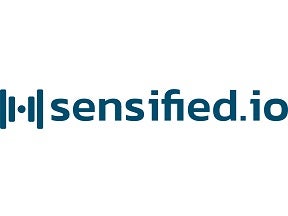
Many critical supply chains depend on accurate temperature monitoring. However, accuracy isn’t the only crucial component – getting actionable temperature data in a timely fashion is extremely important as well.
Dependable temperature monitoring is an absolute necessity in areas like the pharmaceutical cold chain. Such systems rely on maintaining optimal conditions for the supplies in transit. Poor transport strategies in shipping pharmaceuticals can have devastating effects on the supplier, the recipient, and, above all the patient.
Choosing the type of temperature monitoring is one of the foundations of an efficient strategy. In that regard, two options are available: passive and real-time monitoring. The former is a more traditional method of temperature monitoring, while the latter represents a more recent option made possible by advancements in cellular and cloud technology.
Based on the short descriptions above, it might appear that real-time monitoring is the way to go, but the choice is not as clear-cut as it appears. Yet, some cold chain suppliers still keep to the passive variant. To understand why, we must compare the two approaches to temperature monitoring.
What Is Passive Temperature Monitoring?
Passive temperature monitoring refers to monitoring without any interaction during the shipping process. One or more temperature sensors are placed with the shipment. The monitor is connected, usually through USB, and it measures and records temperature changes.
Once the shipment arrives, the receiver can check the monitoring records and review the history. No information about the conditions is available prior to that point. With a typical USB monitor, passive monitoring doesn’t support features like cloud connectivity or wireless data transfer.
While passive temperature monitoring provides valuable data, it doesn’t send out any real-time readings. In other words, if the conditions change drastically during the shipment, there’s no way to learn or react to the changes in due time.
What Is Real-Time Temperature Monitoring?
Real-time monitoring is based on wide-area (typically cellular) connectivity. This system updates temperature data instantly, with minimal or no latency. Since the data is shared via the cloud, both the sender and receiver have full access to it at all times.
Naturally, real-time monitoring also keeps the history of the measurements, which is available upon arrival. But the cellular-based system ensures a constant flow of information, which means that records about temperature changes aren’t seen for the first time when the shipment arrives. Instead, the readings are available immediately.
The real-time temperature monitoring system is often dubbed IoT monitoring. IoT stands for the Internet of Things, referring to multiple interconnected devices that communicate with one another. The connection is usually cellular and depends on coverage.
Pros and Cons of Real-Time Monitoring
Real-time temperature monitoring has many advantages. The system provides real-time updates, records history, and allows a proactive approach with cloud-based data sharing. In addition, the IoT approach removes the need for manual data handling.
The main disadvantage of real-time monitoring is that it comes with a higher cost. Being cellular devices, the monitors are significantly more costly than passive monitors. In addition, cellular monitors usually also include a recurring monthly cost. To be viable, this system needs to include reusable devices that can be recovered. Many elements of the pharma supply chain, such as deliveries to end customers, do not have a robust reverse logistics component, so it becomes untenable to recover monitoring devices used in shipment.
In addition, real-time data is only actionable when the organization is able to respond in real-time. There are many situations, such as dealing with a large shipper, when knowing about a temperature excursion doesn’t mean that the receiver or sender can actually do anything about it.
Finally, there’s the issue of coverage areas. Generally, air and sea transport don’t provide coverage, and thus don’t allow for real-time updates. Even within the US, large parts of the Interstate highway system still have significant coverage gaps, although this situation has improved markedly in the last twenty years.
Seguro Devices – Combining the Best of Both Worlds
Sensified.io has come up with a line of monitoring devices that provides cloud connectivity and touchless access to real-time monitors, without the high hardware and recurring cost. By combining the latest in wireless, cloud, and mobile device technology, Seguro devices provide a seamless, reliable monitoring solution that reduces quarantine times and provides a clear chain of custody data.
Seguro devices have a completely wireless design, meaning there’s no need for uploads or USB connections. The system can use any type of cellular phone to connect to the cloud without requiring a dedicated app.
Importantly, Seguro devices are a cost-efficient solution regardless of whether the devices are recovered. While the devices are reusable and have an exceptional battery life, their affordable price point means that their cost-effectiveness isn’t contingent of recovering the devices after use.
The Seguro monitoring system represents an ideal solution for many cold chain applications, incorporating many of the advantages of passive and real-time temperature monitors. Find out more about this impressive product on the official Sensified.io website.

